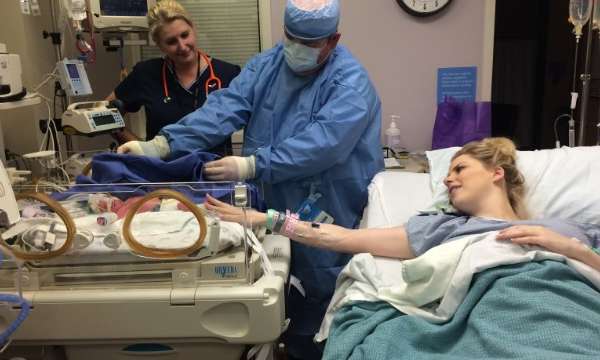
How does IVF help in enabling pregnancy?
8 Oct 2015 | 4 min Read
Dr Ritu Hinduja
Author | 4 Articles
In vitro Fertilization (IVF) is one of the most common and highly-successful Assisted Reproductive Technologies available today to help couples who are facing problems conceiving naturally. To understand how IVF works, we start with the basics of natural conception and will then explore how IVF treatment can help.
NATURAL CONCEPTION
In natural conception, the ovaries, the fallopian tubes and the uterus play an important role on the woman’s part and a good sperm count on the male’s part.
The ovaries must produce ovum/ova (ovulation).
The fallopian tube must do the following:
– It picks up the ovulated oocyte (egg) released from the ovary
– It provides a good environment for the ovum and the sperm to meet (fertilization)
– It transports the resulting embryo to the uterus, so that implantation can take place.
The uterus must be receptive to the embryo attaching itself to its wall (implantation), which will grow into the foetus.
How is IVF done?
– Stimulation of ovaries to help create more than one egg in each of the ovaries
– Removal of eggs from the ovary
– Fertilization of egg with the sperm, thus forming embryo in the laboratory.
– Growing the embryos in the laboratory till day 3 or day 5.
– Subsequent placement of the embryos in the uterus.
1.Ovarian stimulation:
Your doctor prescribes a course of drugs for you to take to stimulate your ovaries into hopefully producing 12 to 15 mature eggs. These are hormonal injections that you would be required to take on a daily basis for an average of 11 days.
2. Monitoring of your drug response:
The progress of your ovarian stimulation needs to be monitored to allow modification of the dose of the drug being administered to you. For this, you will need to undergo a series of ultrasound examinations, which will be mostly after the first five days of injections and thereafter every two days, till the follicles in your ovaries have reached a desirable size where the doctor feels they will be able to retrieve mature oocytes (eggs).
Image of how your ovaries look on an ultrasound after stimulation
3. Egg maturation:
Once your follicles have reached a desirable size, the doctor will prescribe you a trigger injection to allow the final stage of egg maturation to occur. The eggs are retrieved from the ovaries, 34 – 35 hours after the trigger injection.
4. Egg collection:
You receive a short general anaesthesia for this procedure, and your doctor retrieves your eggs through your vagina, using an ultrasound-guided technique.
Egg collection
5. Sperm production:
On the day of egg collection, your partner provides a semen sample, which is then sent to the laboratory for being processed for the desired procedure of IVF /ICSI (Intra Cytoplasmic Sperm Injection).
6. Fertilisation:
The embryologist puts sperm and eggs together in the lab and, if all goes well, the eggs fertilise and early embryo development begins. If the sperm count is on the lower side, then each individual sperm is sorted and injected into one egg to ensure fertilization. These injected oocytes (eggs) are then monitored over 3 days in the laboratory.
Intracytoplasmic sperm injection (ICSI)
7. Embryo transfer:
Three to five days after egg collection, your doctor places one or two preselected embryos in your uterus. This procedure is carried out in the sterile environment of an operating theater but not under anaesthesia. You will be asked to have your bladder full before the procedure which is carried out under ultrasound guidance. This procedure is completely pain free.
Embryos
8. Embryo freezing:
If you have additional embryos suitable for use, they can be cryopreserved (frozen) and kept for future transfers (just in case this one doesn’t make you pregnant).
9. Luteal Phase Support with Progesterone Supplementation:
Progesterone (hormone that supports pregnancy) supplementation is used after embryo transfer – during the ‘luteal phase’, or second half of a woman’s cycle, to help ready the endometrium (innermost lining of uterus) to receive an embryo for implantation. The progesterone is continued until the end of the first trimester if the pregnancy is successful, or until the negative pregnancy test.
The pregnancy is typically confirmed through repeated B-HCG (pregnancy indicator) tests (done from a blood sample) in a week after the embryo is transferred. If the B-HCG levels grow satisfactorily in a certain duration (your doctor will advise), an ultrasound scan is recommended after HCG value is atleast 1000. If all is well, Congratulations! You are pregnant…
To read more, about the risks of undertaking an IVF treatment, please click here.
A


Suggestions offered by doctors on BabyChakra are of advisory nature i.e., for educational and informational purposes only. Content posted on, created for, or compiled by BabyChakra is not intended or designed to replace your doctor's independent judgment about any symptom, condition, or the appropriateness or risks of a procedure or treatment for a given person.
